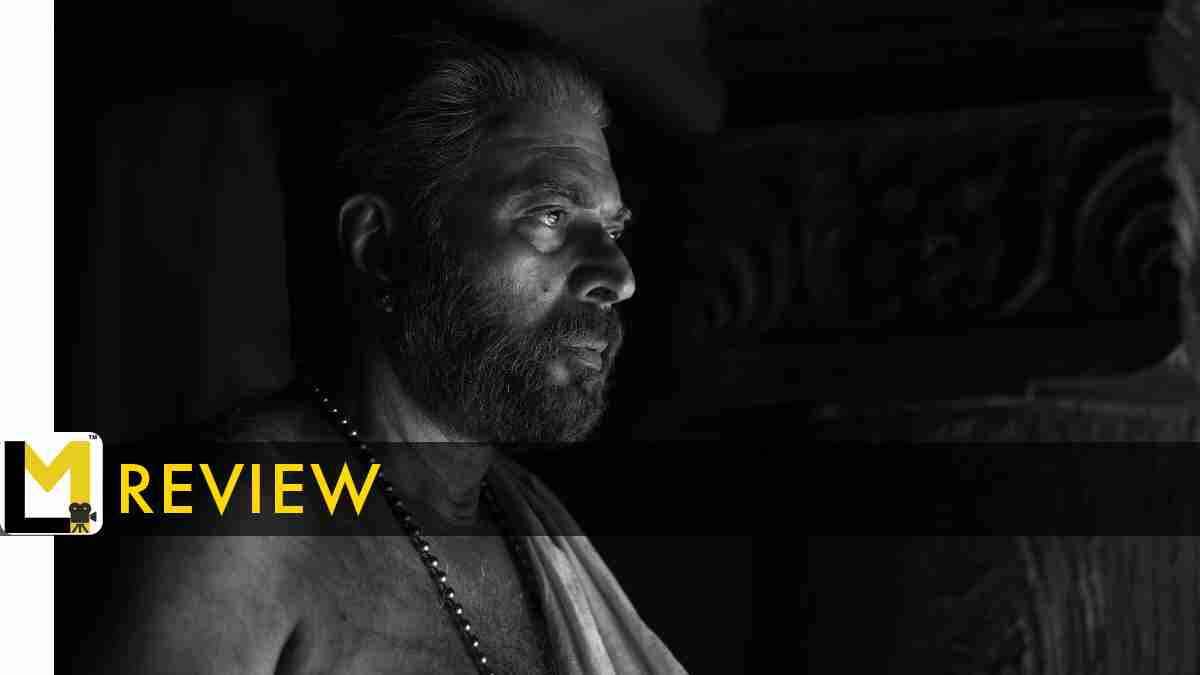In terms of scale, Bramayugam might not be trying anything extravagant as Rahul Sadasivan is yet again exploring a haunted house theme, this time set in the 17th century. But while his previous film Bhoothakalam had this allegory of dealing with our own past, the new one starring Mammootty is more of a political film that uses the horror palette to explore the power pattern in history.
As I said, the movie is set in the 17th century, and the central character, a man who belongs to the Paanan caste, gets lost while escaping from a slave market. The man eventually reaches the deserted big house (mana) in the middle of the jungle. Realizing Paanan’s singing capability, the head of the deserted house, Kodumon Potti, decides to offer him a space to live in that house. With just Potti and his cook in that old house, the stay wasn’t that comfortable for the man, and what we see in the film is his efforts to escape from that place.
As I already mentioned, the idea is to represent the obsession behind power. Like how Rahul used the psychological shades of his lead characters in Bhoothakalam to enhance the horror, here, he uses the social construct of power to narrate a horror story. When you backtrack the whole film, what seems to be exciting is how this political statement is staged as an undercurrent. Rahul’s script is structured in a way, that every dialogue and situation that has the classic horror film texture gets to be reinterpreted once the politics become clear to us in the end. People sort of interpreted the time-loop as the movie’s central concept from the trailer, but it is more about a repeated pattern of power dominance in history.
This new exploring phase of Mammootty is still pretty exciting. As Kodumon Potti, a cunning, vicious, manipulative house head, the actor is having a ball, and even the slightly eccentric tone of the character makes sense once we get to know that character in detail. The dialogue delivery and the sudden changes of expression are terrific. Arjun Ashokan plays the character who navigates the movie for us. And in terms of expressions and body language, he conveyed the character’s transitions brilliantly. If there is one area where both Arjun and Siddharth Bharathan fumbled, that will be in delivering their lines. Because of the magnetic way, Mammootty was delivering those lines written by TD Ramakrishnan, the occasional stiffness in the dialogue rendering of these two sort of stood out.
When it comes to the visualization part, you can clearly sense the Hitchcockian visual influence in Rahul Sadasivan’s craft. The black and white visuals not only depict the colorlessness of the situation but enhance the horror elements, like how we used to feel while watching those retro classics. Shahnad Jalal is not trying to make the camera do drastic movements, and I would say it is the lensing that is creating the horror along with the pretty precise cuts. The film’s production design is exceptionally good, and I really wish to know how they executed some of those hallucinated shots of the two getting trapped. Christo Xavier’s background score plays a significant role in building the eerie ambiance.
When Bhoothakalam ended after making the audience nervous, most of us weren’t thinking about the ghost. Rahul Sadasivan had managed to make it more of a dysfunctional family drama that sheds light on things that are somewhat relatable to us on a psychological level. In the final moments of Bramayugam, Rahul manages to take the movie away from the genericness of a horror film and give it a layer of power politics, that will make you revisit and interpret every instance of the story you just witnessed.
Rahul manages to take the movie away from the genericness of a horror film and give it a layer of power politics, that will make you revisit and interpret every instance of the story you just saw.
Green: Recommended Content
Orange: The In-Between Ones
Red: Not Recommended


